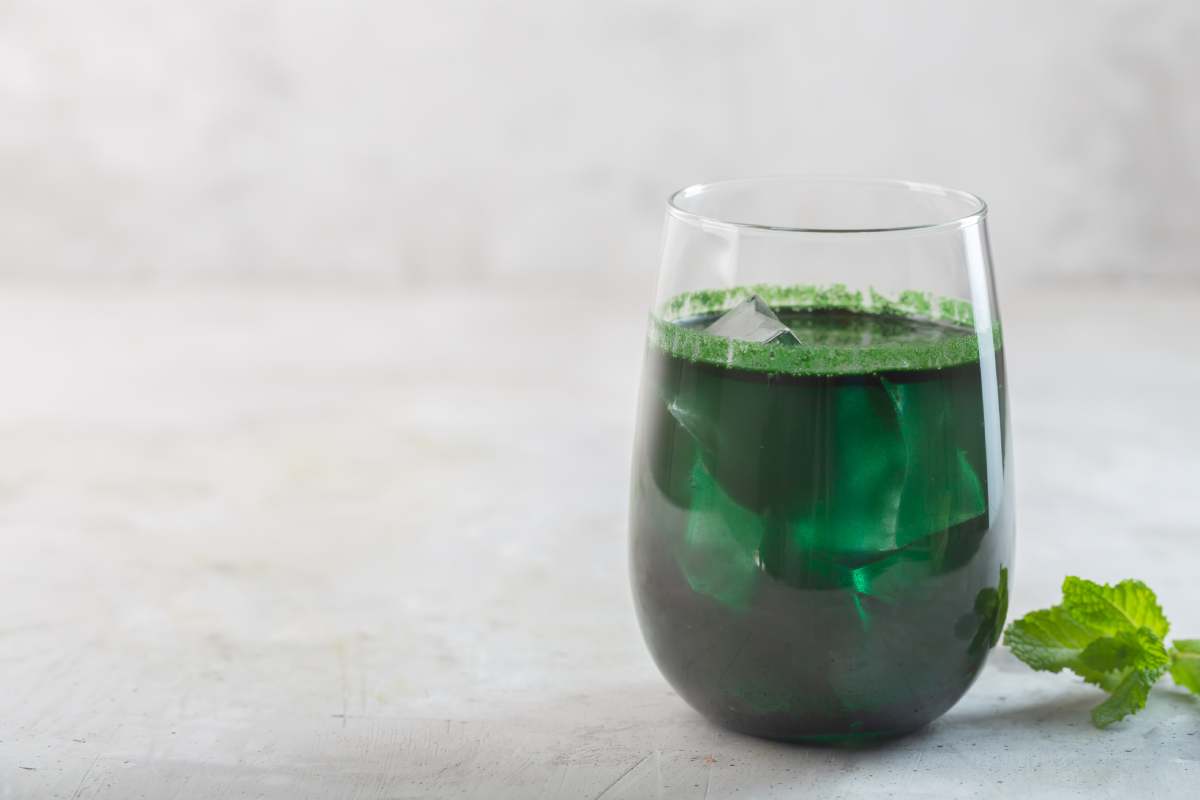When you want to take care of yourself by taking supplements and then you see the ads about chlorophyll water, you might want to try some. They claim that adding a few drops of liquid chlorophyll to 8 ounces of water can boost energy levels and clear up pimples. But is there any truth to these claims, or are they just jumping on the latest internet trend?
Chlorophyll is essential for plants, helping them convert sunlight into food through photosynthesis. Some say it has numerous health benefits for humans too. While it can be beneficial, it’s not a miracle cure. So, what really happens to your body when you drink liquid chlorophyll every day? Let’s take a closer look.
What is Chlorophyll?
Chlorophyll is a green pigment found in plants, responsible for absorbing sunlight and converting it into energy through photosynthesis. This process is crucial for plant life and, indirectly, for all life on Earth. Chlorophyll is rich in vitamins and antioxidants, making it a desirable component for health supplements and drinks.
The Concept of Chlorophyll Drinks
Chlorophyll drinks are beverages that contain chlorophyll extract, usually in the form of chlorophyllin, a water-soluble derivative. These drinks are typically marketed as detoxifiers, energy boosters, and overall wellness enhancers. They come in various forms, including liquid drops, powders, and ready-to-drink bottles.

Potential Benefits
- Detoxification: Chlorophyll is believed to have detoxifying properties. It can bind to and remove certain toxins from the body, helping to cleanse the liver and improve overall health. This process is often referred to as “detox.”
- Antioxidant Properties: Chlorophyll contains antioxidants that help combat oxidative stress in the body. Oxidative stress is linked to ageing and various diseases, so reducing it can promote better health and longevity.
- Improved Digestion: Some studies suggest that chlorophyll can aid in digestion. It may help reduce constipation and promote a healthier digestive tract. This is partly due to its potential to promote the growth of beneficial gut bacteria.
- Weight Loss Support: Chlorophyll is sometimes touted as a weight loss aid. It may help control appetite by regulating hunger hormones, which can lead to reduced food intake and, consequently, weight loss.
- Enhanced Energy Levels: Proponents of chlorophyll drinks claim that they can boost energy levels. While scientific evidence is limited, some people report feeling more energetic after consuming chlorophyll.
- Skin Health: Chlorophyll is also marketed as beneficial for skin health. Its antioxidant properties can help reduce acne and improve skin appearance by promoting a clearer, healthier complexion.
How to Consume Chlorophyll Drinks
Chlorophyll drinks are typically consumed once or twice a day. If you’re using liquid chlorophyll drops, you can add them to water or another beverage. Powders can be mixed into smoothies or juices. Ready-to-drink options are straightforward—just open and drink.
Potential Side Effects
- Quality of the Product: Ensure that the chlorophyll supplement you choose is of high quality. Look for reputable brands that use natural ingredients without harmful additives.
- Dosage: Follow the recommended dosage on the product label. Starting with a lower dose and gradually increasing it can help your body adjust and reduce the risk of side effects.
- Potential Side Effects: While generally safe, chlorophyll water can cause side effects in some individuals, including digestive issues like diarrhoea or nausea. If you experience any adverse effects, reduce the dosage or discontinue use.
- Health Conditions: If you have any pre-existing health conditions or are taking medications, it’s essential to consult with a healthcare professional before adding chlorophyll water to your daily routine. Pregnant or breastfeeding women should also seek medical advice before use.
- Scientific Evidence: While there are many anecdotal reports of the benefits of chlorophyll, scientific research is still ongoing. Some studies support its potential health benefits, but more comprehensive research is needed to confirm these effects.
Scientific Evidence
It’s important to note that while there are many anecdotal reports of the benefits of chlorophyll drinks, scientific research is still ongoing. Some studies support the potential health benefits, but more comprehensive research is needed to confirm these effects.
Who Should Not Drink Chlorophyll?
While chlorophyll is generally considered safe for most people, there are certain groups of individuals who should be cautious or avoid drinking chlorophyll supplements. Here’s a breakdown of who might want to avoid chlorophyll:
Individuals with Certain Health Conditions
-

Allergies: Those with allergies to specific plants or substances used in chlorophyll supplements should avoid them. Always check the ingredient list to ensure there are no potential allergens.
- Digestive Disorders: People with digestive conditions, such as irritable bowel syndrome (IBS) or Crohn’s disease, may experience exacerbated symptoms when consuming chlorophyll. It’s best to consult a healthcare provider before starting.
- Hemochromatosis: This condition involves excessive iron accumulation in the body. Chlorophyll can enhance iron absorption, which might worsen symptoms for those with hemochromatosis.
Pregnant and Breastfeeding Women
The effects of chlorophyll supplements during pregnancy and breastfeeding are not well-studied. To ensure safety for both the mother and the baby, it’s recommended to avoid chlorophyll supplements unless advised otherwise by a healthcare provider.
People on Certain Medications
- Photosensitizing Medications: Chlorophyll can increase sensitivity to sunlight. Those taking photosensitizing medications (which increase the skin’s sensitivity to sunlight), such as certain antibiotics, should avoid chlorophyll to prevent severe sunburn or skin damage.
- Blood Thinners: Chlorophyll can have mild blood-thinning effects. People on blood-thinning medications like warfarin should consult a healthcare provider before consuming chlorophyll, as it might interfere with the medication’s efficacy.
Individuals Undergoing Surgery
Due to its potential blood-thinning properties, it’s advisable to stop taking chlorophyll supplements at least two weeks before any scheduled surgery to reduce the risk of excessive bleeding during and after the procedure.
People with a History of Photosensitivity
Chlorophyll can increase photosensitivity, leading to a higher risk of sunburn or skin reactions when exposed to sunlight. Individuals with a history of photosensitivity should be cautious and may want to avoid chlorophyll supplements.
Children
The safety and appropriate dosage of chlorophyll supplements for children have not been well-established. It’s best to avoid giving chlorophyll supplements to children unless recommended by a healthcare provider.
Potential for Interactions and Side Effects
While chlorophyll is natural, it can still cause side effects such as digestive issues (diarrhoea, nausea), green discolouration of the urine or faeces, and allergic reactions. If any adverse effects are experienced, it’s crucial to discontinue use and consult a healthcare provider.

How to Take Chlorophyll Supplements?
You can find chlorophyll supplements at health food stores, drug stores, and natural food shops. They come in various forms, including:
- Tablets
- Ointments
- Sprays
- Liquid
Dosage
According to Oregon State University, the average dosage of chlorophyllin supplements is between 100 and 300 milligrams (mg) per day, divided into three doses. Since chlorophyll supplements are not regulated, dosages can vary. It’s important to consult with your doctor to determine if you need them and what dosage is right for you.
How to Incorporate Chlorophyll
- Liquid Form: You can add liquid chlorophyll to recipes, smoothies, or drinks.
- Powder Form: Mix the powder into water, juice, or sauces.
Safety
Always talk to your doctor before taking chlorophyll or any supplements, especially if you’re on medication or have existing health conditions, as they can cause unintended side effects.
Natural Sources of Chlorophyll
You can make your own liquid chlorophyll supplement using parsley and water. For example, three ounces of parsley yields about two tablespoons of chlorophyll. This homemade chlorophyll can be used in smoothies.
Fresh, green plants are good sources of chlorophyll. Vegetables and herbs such as:
- Wheatgrass
- Green beans
- Spinach
- Parsley
- Arugula
- Peas
- Leeks
According to Oregon State University, one cup of raw spinach contains about 24 mg of chlorophyll, and parsley has about 19 mg per cup. Blending parsley with water creates a “liquid chlorophyll” drink. Other greens typically contain 4 to 15 mg of chlorophyll per cup.
For the best source of chlorophyll, choose vegetables and herbs that are green both inside and out. While veggies like broccoli and asparagus are green on the outside, their whitish interior indicates a lower chlorophyll content.
Takeaway
Chlorophyll is found in plants and can also be taken as a supplement. It may offer health benefits like reducing cancer risk and aiding in skin healing. However, more research is needed to fully understand these benefits.
To get more chlorophyll, eat more vegetables like spinach, parsley, and arugula. You can also find chlorophyll supplements at health food stores and drug stores.
Always talk to your doctor before starting any new supplement.










